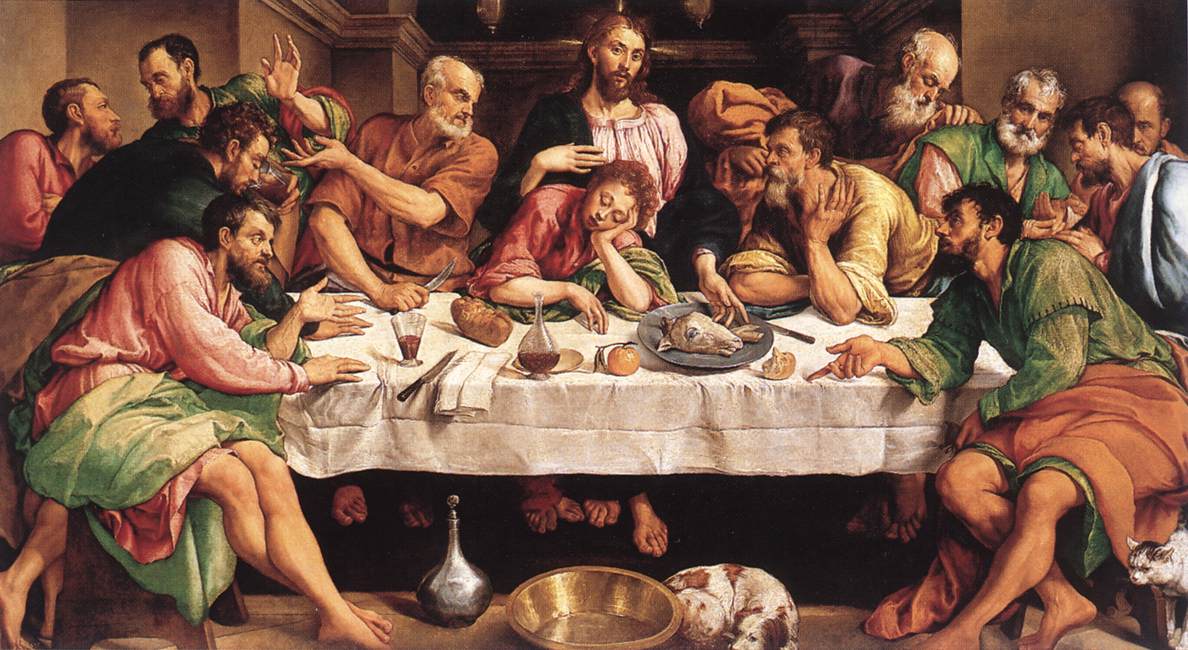Jacopo Bassano: An Artist of Remarkable Originality
 Friday, April 15, 2022 at 8:00AM
Friday, April 15, 2022 at 8:00AM  Jacopo Bassano - The Last Supper - c. 1546 - Oil on canvas, 168 x 270 cm - Galleria Borghese, Rome (click photo for larger image)Jacopo Bassano (ca. 1515-1592) known also as Jacopo dal Ponte, was an Italian painter who was born and died in Bassano del Grappa near Venice. He took the village as his surname.
Jacopo Bassano - The Last Supper - c. 1546 - Oil on canvas, 168 x 270 cm - Galleria Borghese, Rome (click photo for larger image)Jacopo Bassano (ca. 1515-1592) known also as Jacopo dal Ponte, was an Italian painter who was born and died in Bassano del Grappa near Venice. He took the village as his surname.
Even though Jacopo worked in a small town, he was one of the Veneto's most influential painters in the mid-1500s. A pioneer in genre scenes and landscape painting, he initially trained with his father in the town of Bassano.
By 1534 he had found his direction in the art of nearby Venice, learning as much from the chiaroscuro and luxurious color of Titian's works as from his teachers. He always stayed abreast of developments in Venetian painting, sometimes borrowing details from Lorenzo Lotto's works in his portraits. Engravings were critical in forming Jacopo's style, particularly those by and after artists like Albrecht Dürer, Raphael, and Parmigianino.
Local taste required that art illustrate reality, and Jacopo drew inspiration from the simple human scenes, farm life, and changing aspects of nature he observed in his hometown. To Mannerism's energy, extreme movement, and tightly compressed space, he added realism and earthiness. A humble and subtle observer, his sitters may seem unaware of his presence. Increasingly, he used religious and philosophical subjects as pretexts for painting genre scenes and landscapes. Jacopo's workshop was a minor industry in Bassano, and his four sons continued his style into the next century. (Excerpted from the Getty Museum)
Bassano's “Last Supper” (featured here) is one of the masterpieces of 16th-century Italian painting. Instead of the elegant grouping of figures in Leonardo's painting, which inspired it, this dramatic scene features barefoot fishermen at the crucial moment when Christ asks who will betray him, and the light passing through a glass of wine stains the clean tablecloth red. Recent restoration has only now revealed the extraordinary original colors, which had been heavily painted over in the 19th century, when the emerald green and iridescent pinks and oranges were not in fashion.







Reader Comments